Washington Park Was Once Farmland
Olmsted-designed park is an urban oasis with historic homes nearby.
Distance: Two-and-a-half miles
Start: At the corner of W. Lisbon Ave. and N. 32nd St.
Parking: On the street
If you tried to picture Milwaukee in the mid-1800s, you would see no development west of N. 32nd Street and north of W. Wisconsin Avenue. There you would find prosperous farms served by a pair of plank roads, the Lisbon Plank Road and the Wauwatosa Plank Road. These two roads defined what is now the south side of Washington Park and the northeast corner of the park, and thus offered farmers a way to take their produce to market.
As the city moved westward, wealthy citizens began to build summer homes in this area. Two of the most spectacular homes are located at 1731 N. 32nd St. and 1727 N. 34th St. The Frederick Koenig Residence on 32nd once sat on four acres, faced the Lisbon Plank Road and was located in the middle of what is now the street. The home was condemned by the city when 32nd Street cut through the middle of the property it sat on. It was eventually moved to its current location at 1731 N. 32nd St.
A second notable home at 1727 N. 34th St. was part of a 20-acre estate owned by a St. Louis brewer. It sat on a hill and commanded a view of the surrounding area. The hill, a splendid sight with its trees, bushes, gardens, apple orchard, a chicken house and windmill, was a fine homesite for the Franz Joseph Uhrig Residence.
As Milwaukee continued its westward march beyond the city limits at N. 35th St., developers began to purchase the land held by the gentlemen farmers who had built their summer homes in the area. As land became increasingly expensive, in a move of remarkable foresight, in 1890, the city purchased 125 acres for $387,000 for a city park. They named it West Park and hired Frederick Law Olmsted to design it. By 1894, 4,000 trees had been planted on these former farmers’ fields. In 1900, the city changed the name from West to Washington to reflect our nation’s history and honor our first president.
In 1892, Gustave Pabst and Louis Auer donated five deer which were soon followed by one buck. Eight years later the herd had grown to 35, an impressive performance by just one buck. It was a modest beginning, but now Milwaukee had a zoo that grew over the decades. During the Great Depression, a few people felt the zoo was an expensive luxury. There was a proposal to destroy some of the large animals as a cost-saving measure. Fortunately, it was denied! The zoo remained in Washington Park until 1958, when Highway 41 cut off part of the west side of the park where the zoo was located. After 1958, it was moved to its present location at 10001 W. Blue Mound Rd.
During the latter decades of the 20th century Washington Park began to decline, as did the surrounding neighborhood. As some aspects of the park deteriorated, what remained was the elegant design Olmsted had planned, open meadows, wooded areas, curved walkways, a seven-acre lagoon, a waterfall, a lily pond and a stone bridge.
As all things tend to cycle and recycle, after 2000 the park and the neighborhood began a slow recovery. The Emil Blatz Temple of Music, built in 1938, was renovated in 2005, and today Washington Park has a senior center, soccer fields, a “Play Trail” for kids, and a branch of the Urban Ecology Center.
The Walk
Walk south on 32nd and look for 1731, the aforementioned Frederick Koenig Residence. This former Victorian mansion was converted to a “modern” Classic Resurgence style. Continue south on 32nd. and turn right on W. Walnut St. at N. 34th St., look for the Franz Joseph Uhrig Residence at 1727. This Italianate mansion lost a “wing” when 34th St. cut through the property, which gives it a slightly lopsided appearance.
Walk south on 34th to W. Galena St. and turn right. Continue on Galena to N. 40th St. and turn right on 40th. Cross 40th St. when you see the parking lot for the Urban Ecology Center. Walk across the parking lot to the handicapped parking sign and walk uphill on the paved path to the lagoon.
Walk counterclockwise around the lagoon, and soon you will come to the Urban Ecology Center, a contemporary building and the center of outdoor education programs for children and adults.
Continue walking around the lagoon, and you will enjoy a peaceful stroll in the middle of the city. Urban chaos, distant traffic and sirens seem far removed from this quiet oasis. Take time to sit on a bench, to watch the birds, to appreciate the restoration on the banks of the lagoon, and to contemplate this jewel set aside by the city so many years ago.
When you come to the parking lot, retrace your route back to Galena, turn left on Galena, and left again on 32nd St. and soon you will be back where you started, refreshed and ready for breakfast or lunch at Amaranth Bakery and Café.
Along the Walk
If you think stories like this are important, become a member of Urban Milwaukee and help support real, independent journalism. Plus you get some cool added benefits.
Milwaukee Walks
-
Kilbourntown Tour Offers Tons of History
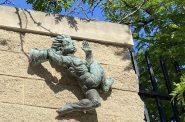 Oct 8th, 2023 by Cari Taylor-Carlson
Oct 8th, 2023 by Cari Taylor-Carlson
-
Riverwest Is a Melting Pot
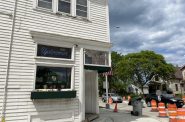 Aug 25th, 2023 by Cari Taylor-Carlson
Aug 25th, 2023 by Cari Taylor-Carlson
-
Layton Boulevard Has Overlooked History
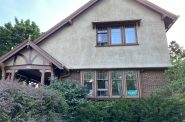 Jul 23rd, 2023 by Cari Taylor-Carlson
Jul 23rd, 2023 by Cari Taylor-Carlson


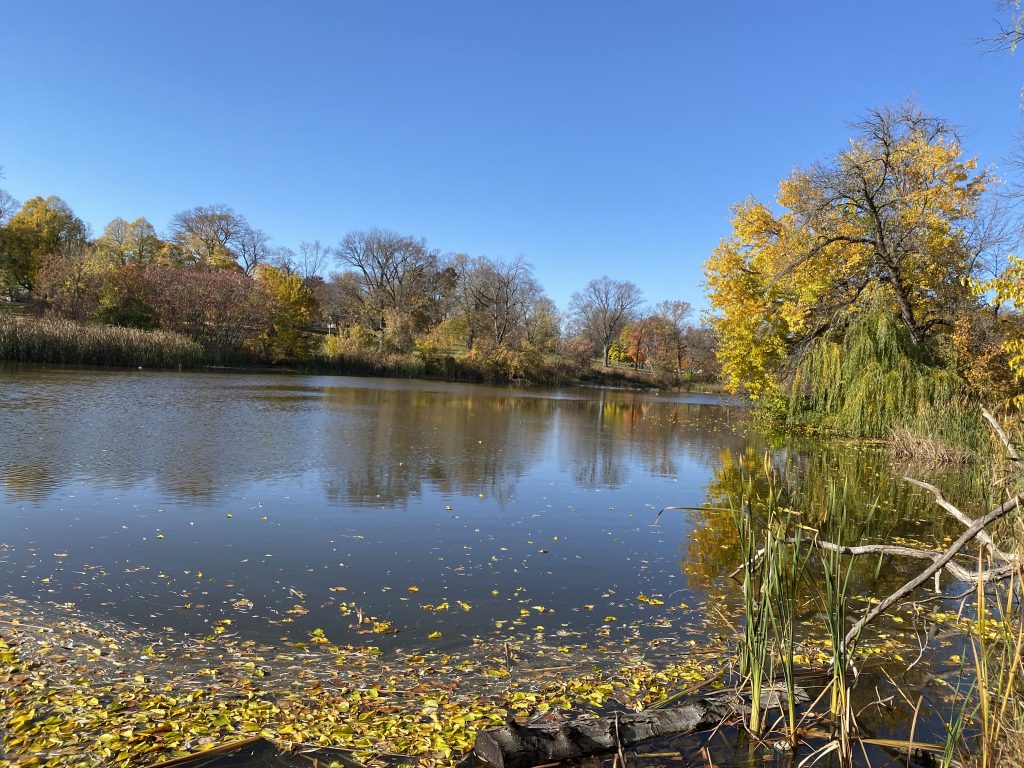
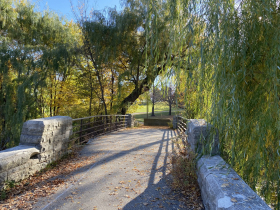
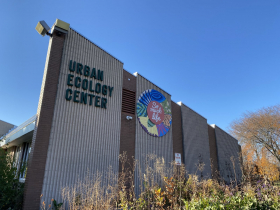
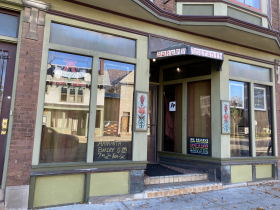
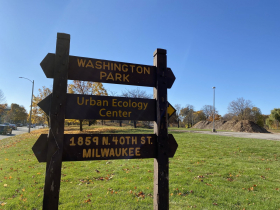
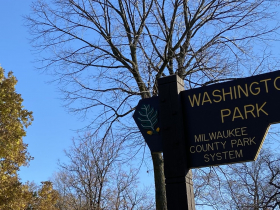
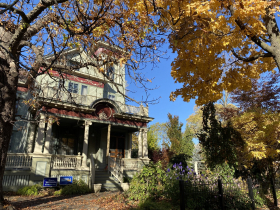



















When our three local Olmstead parks are discussed Riverside Park is seldom mentioned except in passing. I’m hopeful the newly formed Riverside Park friends group will have an impact on years of encroaching neglect. For those interested in donating to, or helping in to rejuvenate this grand old park, please contact: riversideparkfriends.com, or meet at the park baseball diamond on Saturday, July 15 at 10:00 AM for weeding and raking wood chips. Bring gardening gloves if you have them.